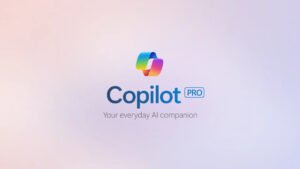
Table of Contents
LLaMA 3.1 has revolutionized the artificial intelligence landscape, setting a new standard for open-source language models. Meta introduced its latest open-source AI model, on July 23, 2024 with three versions namely Llama 3.1 405B, and the upgraded versions of its previous Llama 3 70B and 8B. Here we take a look at the capabilities, performance, and integration options of, showcasing why it’s become the talk of the AI community.
Key Features of LLaMA 3.1:
- Multiple Versions: Available in 8 billion, 405 billion, and 70 billion parameter versions
- Impressive Context Length: 128,000 tokens across all versions
- Multilingual Support: Proficient in 8 different languages namely English, Spanish, Portuguese, Italian, German, French, Thai and Hindi
- Advanced Training: Trained on 15 trillion tokens using 16,000 H100 GPUs
- Fine-Tuned Variants: Instruction and chat-optimized versions available
Performance Benchmarks: LLaMA 3.1 has demonstrated superior performance compared to leading models like GPT-4 o, Claude 3.5 Sonnet, and others across various benchmarks:
- Programming tests
- Logical and reasoning tasks
- Safety evaluations
- AI agent capabilities
- Function calling tests
Integration Options of LLaMA 3.1 :
- Groq: Access through Groq’s API
- Ollama: Run locally on your computer
- Fireworks.ai: Utilize through their cloud infrastructure
Accessing Llama 3.1 405B
- HuggingChat: Users can chat with the new model for free without needing to sign up. It supports various functionalities, including web search and PDF parsing.
- Groq: While Groq initially hosted the 405B model, it currently offers the 70B and 8B models due to high traffic issues affecting the much much larger version.
- Meta AI: In the U.S., users can interact with the model directly through Meta’s platforms, including WhatsApp.

Llama 3.1 can interface with several tools and platforms, enhancing its usability across various applications. Here are the specific tools and services it can work with:
1. Cloudflare Workers AI
- Function Calling: Llama 3.1 introduces native function calling, allowing it to generate structured JSON outputs that can be used with different APIs. This feature enables efficient interaction with serverless architecture, reducing manual request handling.
2. Amazon Bedrock
- API Integration: Users can access Llama 3.1 models via Amazon Bedrock, using model IDs to interact with the models through the AWS Command Line Interface (CLI) and SDKs. This includes capabilities for text generation and conversation handling.
3. Azure AI
- Models-as-a-Service: Llama 3.1 is available through Azure AI, allowing developers to utilize it via serverless API endpoints. It supports various Azure tools, including Azure AI Content Safety and Azure AI Search, facilitating ethical AI practices and enhanced functionality in applications.
4. Hugging Face
- Model Hosting: Llama 3.1 models are also hosted on Hugging Face, providing a platform for developers to test and deploy the models easily within their applications.
5. Custom Applications
- Embedded Function Calling: Developers can create custom applications that leverage Llama 3.1’s capabilities, including memory storage and key-value pair management, through embedded function calling in their code.
These integrations enable the giant model to be used effectively in a wide range of scenarios, from web applications to enterprise solutions, enhancing its versatility as an AI model.
Real-World Applications:
- Code Generation and Analysis
- Complex Problem-Solving
- Multi-task Processing
- Safe and Responsible AI Interactions
- Agentic Behaviors and Function Calling
LLaMA 3.1 vs. Proprietary Models:
- Comparable performance to GPT-4o and Claude 3.5 Sonnet
- Open-source nature allows for greater customization and deployment flexibility
- Lower cost per token, making it more accessible for various applications
Key Points Regarding Commercial Use of LLama 3.1:
- License: The models, including the 405B version, are released under the Community License, which permits commercial use as long as the terms of the license are followed.
- Attribution: If you distribute or create products using the Llama models, you must provide proper attribution, such as including “Built with Llama” in your product documentation or user interface.
- User Limitations: If your product or service exceeds 700 million monthly active users, you need to request a separate license from Meta to continue using the model commercially.
- Compliance: All uses must comply with applicable laws and regulations, including adhering to Meta’s Acceptable Use Policy.
Overall, these advanced large language models are designed to be accessible by all for a wide range of applications, including commercial endeavors, while ensuring that users adhere to the licensing terms set by Meta.
Future Developments:
- Upcoming LLaMA Stack API for easier integration
- Continued improvements in model performance and capabilities
- Potential for industry-wide adoption and further innovation
Conclusion:
LLaMA 3.1 represents a significant leap forward in open-source AI models, offering performance that rivals proprietary solutions while providing greater accessibility and flexibility. As the AI landscape continues to evolve, Meta is poised to play a crucial role in democratizing advanced language models and fostering innovation across various industries.




